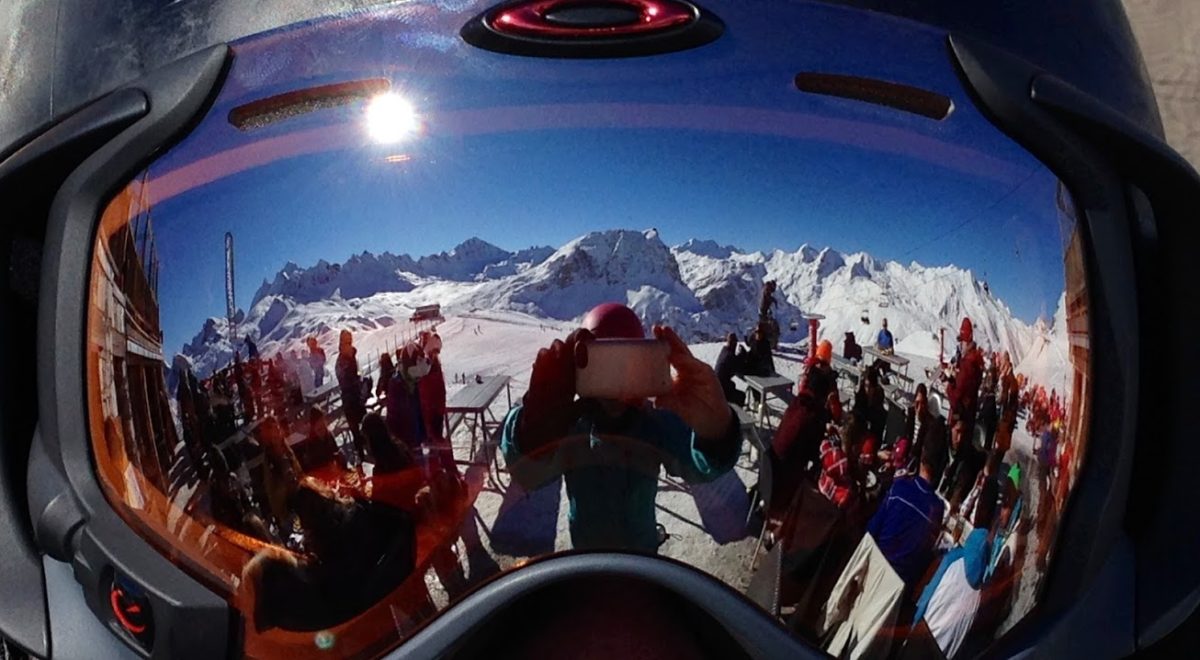1 Avoid flying to the mountains
According to train travel to the slopes website SnowCarbon, 73% of a ski resort’s carbon emissions emanate from the method of transport used by visitors. Swapping to train will cut up to 90% of the CO₂ versus flying there, they say.
Switching from plane to train is not only the most eco-friendly way to travel, but also the most civilised. You will know this if you have ever taken the snow train rather than fought your way through Geneva or Chambery airports, or driven the 1000 km across France to the Alps (at the same time as thousands of others).
The SkiFlightFree.org website cites figures from sustainability consultancy Antithesis Group that indicate flying to the Alps generates 6-7 times as much carbon as travelling by train:

If you’re travelling at half term, a family of four is likely to spend 50% less on the train then flying. The car journey will be even cheaper, even after you’ve factored in the Eurotunnel crossing, an overnight stop and fuel.
TIP: if you are planning to swap plane for train, book early as key dates sell out fast.
2 Wash your ski clothing less
Every time you wash your ski clothing, it releases microplastics that wash through the drains into our rivers and oceans putting marine life at risk. Polyester is a major culprit.
Avoid washing it unnecessarily, spot clean where and when needed rather than putting the whole item into the washing machine, and hang items up to air at the end of every day – and particularly at the end of your ski holiday. You may find that you can completely avoid putting jackets, pants and salopettes through the wash completely.
For polyester and other man-made fibre items that need laundering, use a product such as a Guppy bag, designed to catch any microfibres which shed during the washing process.
TIP: Washing your clothing less often will also help it last longer.
3 Buy and sell secondhand ski clothing
Some £140 million of unwanted clothing goes into landfill each year, according to the Waste and Resources Action Programme (WRAP). Not only this is a terrible waste, but it also means toxins from dumped clothing slowly leach into the earth, and thence also our waterways and oceans.
Synthetics, like those which comprise most of your ski and wintersports wardrobe, are among the worst offenders. Not only do they not biodegrade, but they also reply on petrochemical industries, ie fossil fuels, for their raw materials.
It is vital for the environment, therefore, that they remain in usage for as long as possible. Extending the lifetime of clothing items by just a few months leads to a reduction in the carbon footprint of every item. Passing on a no longer wanted/needed piece of ski or snowboard clothing to another wintersports enthusiast means you are helping cut clothing production levels, albeit in a small way. Your old is someone else’s new: this is the principle behind the circular economy in fashion.
And that is, of course, why WhoSki.com exists. Support us – support the planet. Visit the WhoSki.com shop.
TIP: Always buy and sell kids’ ski clothing secondhand. It is generally good as new and costs a fraction of the price.















